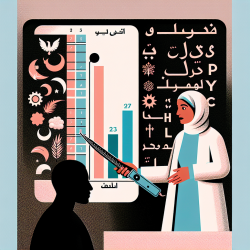Introduction
The Kessler Psychological Distress Scale (K10) is a widely recognized tool for assessing psychological distress across various populations. Recently, a study titled The Kessler psychological distress scale: translation and validation of an Arabic version has provided valuable insights into its application among Arabic-speaking populations, particularly in the Occupied Palestinian Territories (OPT). This blog explores the study's findings and their implications for practitioners working with Arabic-speaking individuals.
Study Overview
The study aimed to validate the Arabic translations of the K10 and its shorter version, the K6, among public sector employees in the OPT. The researchers focused on assessing the reliability and validity of these translations to ensure they accurately measure psychological distress in this population. Data was collected from 234 Palestinian social workers, and the study employed rigorous statistical analyses to evaluate the scales' psychometric properties.
Key Findings
- The mean scores for the K6 and K10 were 12.87 and 21.8, respectively, indicating mild to moderate levels of distress.
- The K6 demonstrated high reliability (Cronbach’s α = .81) and validity, with strong correlations with established measures like the Generalized Anxiety Disorder (GAD-7) and Somatic Symptoms Scale (SSS-8).
- The two-factor K6 model showed the best fit, suggesting it effectively captures dimensions of anxiety and depression.
Implications for Practitioners
For practitioners working with Arabic-speaking populations, the validated K6 scale offers a reliable tool for screening psychological distress. Its strong psychometric properties make it suitable for identifying individuals who may benefit from further psychological support. By incorporating the K6 into their assessment toolkit, practitioners can enhance their ability to detect and address mental health issues in a culturally sensitive manner.
Encouraging Further Research
While this study provides a solid foundation, further research is essential to explore the K6's applicability across diverse Arabic-speaking contexts. Practitioners are encouraged to contribute to this growing body of knowledge by conducting studies in different settings and populations. Such efforts will ensure the tool's continued relevance and effectiveness in addressing the mental health needs of Arabic-speaking individuals.
Conclusion
The validation of the K6 scale in Arabic marks a significant step forward in mental health assessment for Arabic-speaking populations. Practitioners now have a robust tool to aid in the early detection and intervention of psychological distress. To read the original research paper, please follow this link: The Kessler psychological distress scale: translation and validation of an Arabic version.










